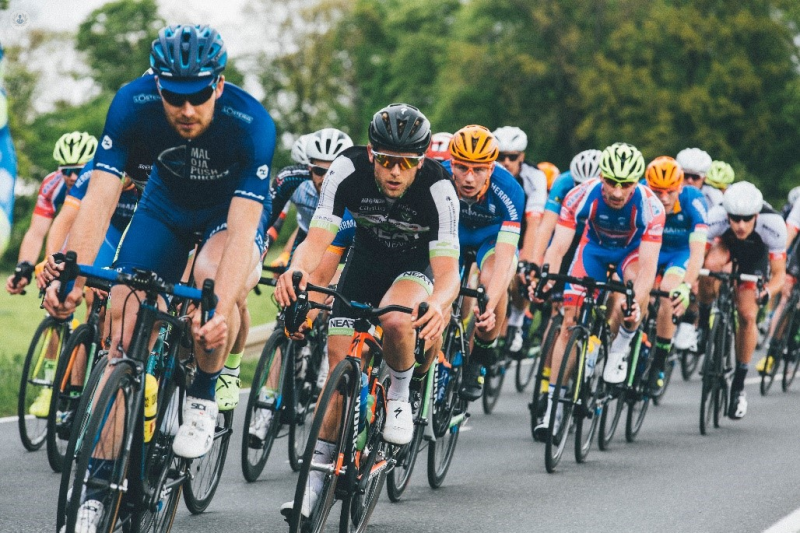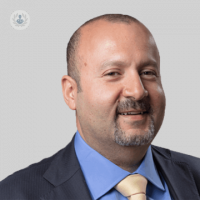What are the most common cycling injuries?
Written by:Cycling injuries are an unfortunate part of cycling and both amateur and professional cyclists will find themselves forced off the bike at some point from an unexpected injury. Professor Ali Ghoz, a revered consultant trauma and orthopaedic surgeon, has put together the most common bike-related injuries and how they can be treated and prevented.

Affected body parts
- Knee - injuries to this body part are often referred to as ‘cyclist’s knee’ and are associated with pain around the knee cap due to constant, repetitive movement. It puts a strain on your connective tissues and causes inflammation and pain.
- Neck and back – spending hours hunched over the handlebars doesn’t do anything for our lower back muscles and often results in undue stress. When we cycle, the neck muscle also needs to bend upwards to look forward which can cause muscle pain.
- Hand, wrist and forearm pain – Carpal tunnel syndrome is a common condition among cyclists, causing pain, numbness and tingling in the hand and arm.
- Handlebar palsy is also a common nerve condition causing numbness and tingling from an irritated ulnar nerve in your arm. This is typically due to repeated shocks to the bike while your hands are holding the handlebars. Sometimes, simply gripping the handlebars too hard can leave your hands in pain, however, this usually subsides after adequate rest.
- Foot numbness and tingling – the pedals or your shoes being too tight and not providing the right support can damage the nerves in your feet.
- Urogenital problems – common problems include genitalia numbness and, for some men, erectile dysfunction.
Which part of the body is most commonly affected?
The knee, specifically around the knee cap, is the part of the body that connects the upper and lower leg and takes the biggest hit when cycling. Several injuries can develop from overuse.
Chronic tendonitis is one of them and is an acute tendon injury. This usually lasts up to six weeks and is an inflammatory response of the tendons due to constant overuse.
Medial plica syndrome is another common injury that results from irritation to the medial plica – a part of the lining of the knee joint from overuse. The symptoms can appear as a dull ache and may be accompanied by a snapping or clicking sensation when the knee is moved.
Ilio-tibial band (ITB) friction syndrome is can cause pain on the outside of the knee. This IT band is a band of tissue that runs down the length of your thigh and works with your knee to stabilise your knee joint.
Acute injuries are also likely due to a fall from the bike and impacting the floor. This can result in bruising and/or fractures to the knee. You may twist your knee when pedalling too hard, meaning one of the ligaments in your knee has been stretched or torn which also results in pain.
What type of treatments can be offered?
After an injury, it’s easy to give in to temptation and get back on the bike but doing so may cause your muscles to overcompensate, resulting in further injury. So rest is important, and a visit to a specialist might be a good idea. The treatment they offer always depends on the type of trauma that’s occurred.
Acute injuries
For any kind of acute injury, where there has been a sudden impact from a fall or crash, then you should initially be following basic first aid. This should be followed up by at-home treatment which involves, resting, applying ice, taking painkillers and/or anti-inflammatories, and if necessary, wearing some type of soft support to reduce any swelling.
If you are suffering from severe pain and swelling, there are visible deformities such as lumps and bumps or your limb is at a strange angle then you should visit A&E as soon as you can to receive professional care.
Chronic injuries
Chronic injuries, which are frequently a result of prolonged, repetitive motion, often require a more holistic approach when deciding the best treatment. It can involve identifying the causes of your injury and working on ways to prevent injury in the future.
Physiotherapy might be considered for chronic injuries, which focus on reducing pain using treatments such as soft tissue massage, passive muscle stretching and joint mobilisation. A physiotherapist can also provide expert guidance on cycling posture and how to set up your bike to ensure you are cycling in a pain-free way to reduce the risks of injury.
If you are suffering from any of the symptoms mentioned in this article, you can schedule a consultation with Professor Ali Ghoz by visiting his Top Doctors profile.


